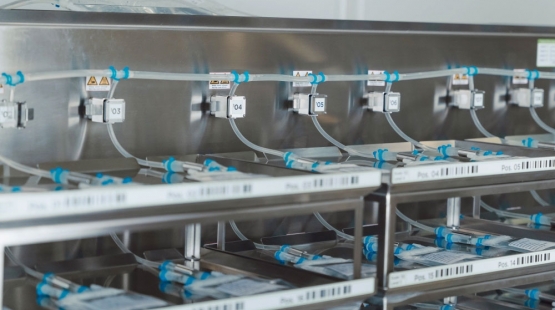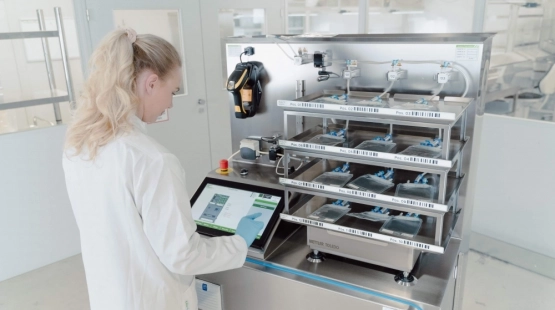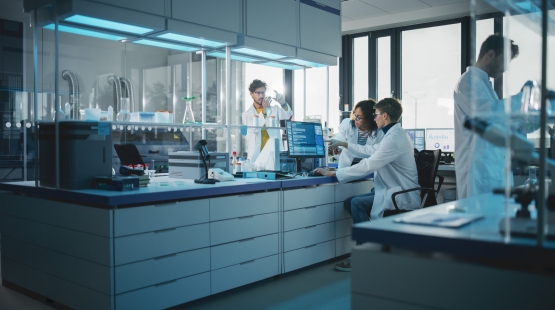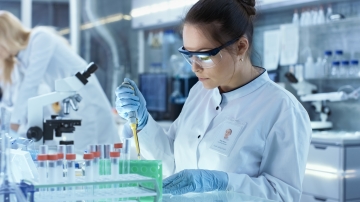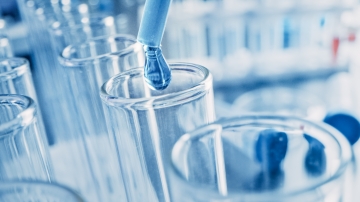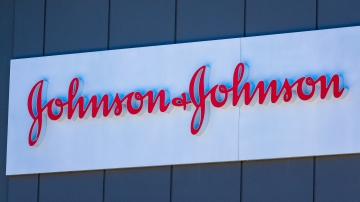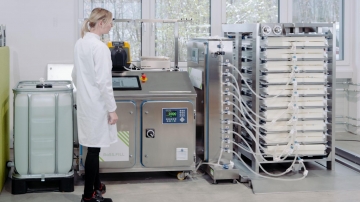The 3 Most Overlooked Costs in Monoclonal Antibody Production
Table of contents
ShowMonoclonal antibodies (mAbs) stand at the forefront of revolutionary medical advancements, playing an important role in diverse therapies and biopharmaceutical breakthroughs. The significance of these engineered proteins extends beyond traditional drug development, reaching critical milestones in clinical trials, combating oncology and infectious diseases.
The demand for mAbs has grown considerably, fueled by the urgency to address global health crises, including the recent pandemic caused by Sars-Cov-2. The spotlight on mAbs as potential healthcare solutions has not only accelerated research but also underscored the necessity of understanding and managing the production costs associated with these biologics.
In this article, we explore the world of therapeutic biotechnology, navigate the manufacturing process for mAbs, and uncover the hidden contributors to high production expenses.
Monoclonal Antibody Manufacturing Process
The journey from laboratory conception to the widespread availability of monoclonal antibodies (mAbs) is a complex process. The production of monoclonal antibodies involves a series of steps, each contributing to the overall success of the biopharmaceutical venture.
A comprehensive understanding of this process is necessary for effective management, not only for ensuring the quality of the final product, but also for addressing the often underestimated aspect of manufacturing costs.
Cell Culture
Central to the mAb production journey is the cultivation of mammalian cells. This critical process involves maintaining a controlled environment to foster the growth and reproduction of these cells, ensuring they produce the desired therapeutic proteins.
At the heart of upstream processing lies the bioreactor, a sophisticated vessel that provides an optimal environment for the growth of mammalian cells. Once suitable cell lines have been identified through characterization, they are cultivated in the bioreactor.
The subsequent synthesis phase describes the actual production of antibodies by the mammalian cells in the bioreactor. During this stage, the cells express and secrete the desired therapeutic proteins, which ultimately become the monoclonal antibodies.
Antibody Purification
In the purification process, monoclonal antibodies are isolated from other cellular components, often achieved through advanced techniques such as chromatography. Achieving optimal purity while maintaining cost-effectiveness is a critical consideration in the quest for efficient mAb production.
Large-Scale Production
As the manufacturing process progresses, transitioning from laboratory-scale to large-scale production presents its own set of challenges. The scalability factor introduces complexities that, if not suitably addressed, can significantly impact both the efficiency of the process and, consequently, manufacturing costs.
Particularly useful for large-scale production are perfusion systems. They offer advantages over traditional batch or fed-batch processes since they allow for sustained high cell density, extended culture duration, and enhanced mAb production. Perfusion refers to a continuous process where fresh cell culture media is added to the bioreactor while simultaneously removing an equal volume of spent media. This ensures a continuous flow of nutrients to the cells, optimizing their growth and productivity.1 2
The 3 Most Overlooked Costs in Monoclonal Antibody Production
In the quest for efficient monoclonal antibody manufacturing, it's imperative to shed light on costs that are frequently underestimated. These costs can stem from various sources, including process development, high prices associated with biotherapeutics, and the evolving landscape of production technologies. Recognizing and addressing these hidden contributors are essential steps toward optimizing the economic aspects of mAb manufacturing.
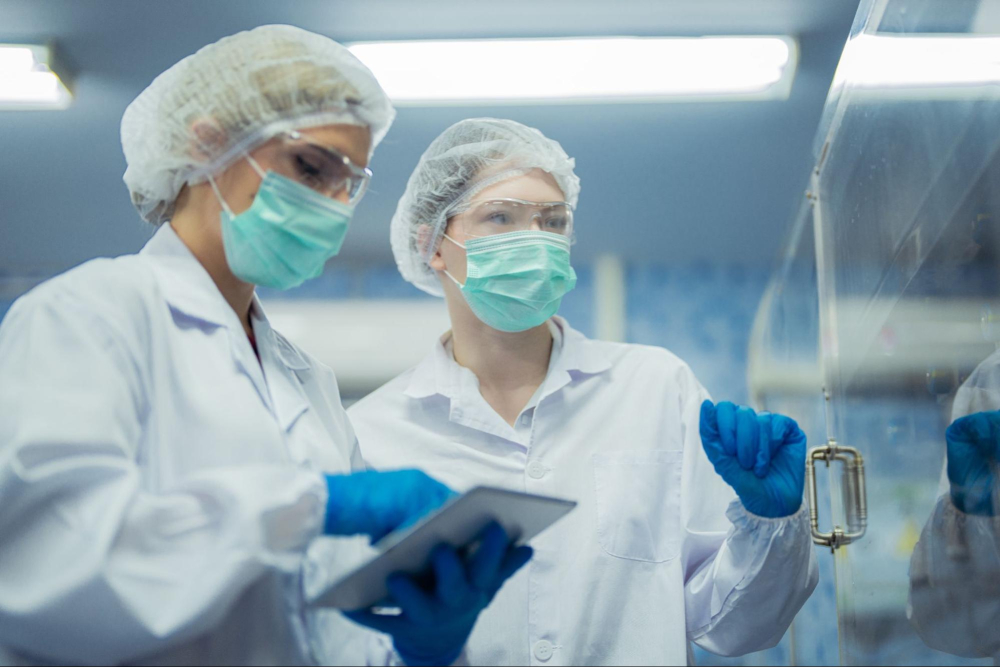
1: Raw Materials and Technology
The first overlooked cost lies in the intricacies of the mAb manufacturing process. From the selection of raw materials to the optimization of production technologies, various elements contribute to this expense.
The cost of goods (COG) is intricately tied to the selection and procurement of raw materials. Additionally, the dynamic nature of production technology introduces both opportunities and challenges. As technologies evolve, understanding their implications becomes paramount in managing manufacturing costs effectively.
Examples for raw materials and the associated high costs are:
- Media and Supplements: The selection of specialized cell culture media and supplements tailored for optimal mAb production can be a substantial expense. Overlooking the variability in prices or not exploring cost-effective alternatives can contribute to significant budgetary impact.
- Serum and Protein Components: The use of fetal bovine serum (FBS) or other protein components in cell culture media can be expensive. The variability in serum prices and potential batch-to-batch variations may introduce unforeseen costs, especially if alternatives or synthetic substitutes are not explored.
- Cell Lines: Acquiring and maintaining suitable cell lines for mAb production involves costs associated with cell line development and seed culture. Traditional seed train processes, starting from master cell banks, hinder efficient cell line development. Overlooking the long-term expenses tied to maintaining stable and high-producing cell lines can impact overall production costs.
- Bioreactor: The materials used in bioreactors can contribute to overlooked costs. Choosing single-use or stainless steel bioreactor systems without considering long-term expenses for energy consumption, cleaning, and costs for lost quality may lead to unexpected budget constraints.
2: Process development
Process development and especially process deviations, though seemingly minor, can quietly accumulate into the second overlooked cost. Whether due to unexpected variations in cell culture or fluctuations in environmental conditions, these deviations can disrupt the precision of mAb production. Manual handling, with its higher risk of operational errors, and the lack of automation in specific process steps, like homogenization and fluid transfer, contribute to the emergence of these deviations. Addressing and minimizing these deviations with automated and closed end-to-end solutions are crucial for controlling costs while maintaining the quality and consistency of the final product.
Optimizing the mAb production process requires continuous refinement, with each improvement contributing to enhanced efficiency and reduced costs. Acknowledging the iterative nature of process development is essential for staying ahead in the ever-evolving field of biopharmaceutical manufacturing.
3: Lifecycle Management Challenges
The third often overlooked cost emerges from challenges in lifecycle management. As mAb products progress through their lifecycle, from development to commercialization and potential updates, the associated costs may not always align with initial projections.
Unexpected costs may come with regulatory compliance updates and rigid and inflexible production systems. Changes in regulatory requirements and compliance standards over the product life cycle may necessitate updates to manufacturing processes, documentation, and quality control procedures.
Moreover, introducing variations or extensions to existing mAb products, such as different formulations or dosage forms, may pose challenges in terms of manufacturing adjustments, additional testing, and regulatory approvals.
In both cases, flexible, adaptable systems provide a solution to be open for such optimisations. Single-use technologies offer advantages in flexibility and easy scale-up to meet changing needs of CDMOs or manufacturers. Their adaptability allows for swift adjustments to meet changing demands, providing a strategic solution to the evolving challenges of lifecycle management.
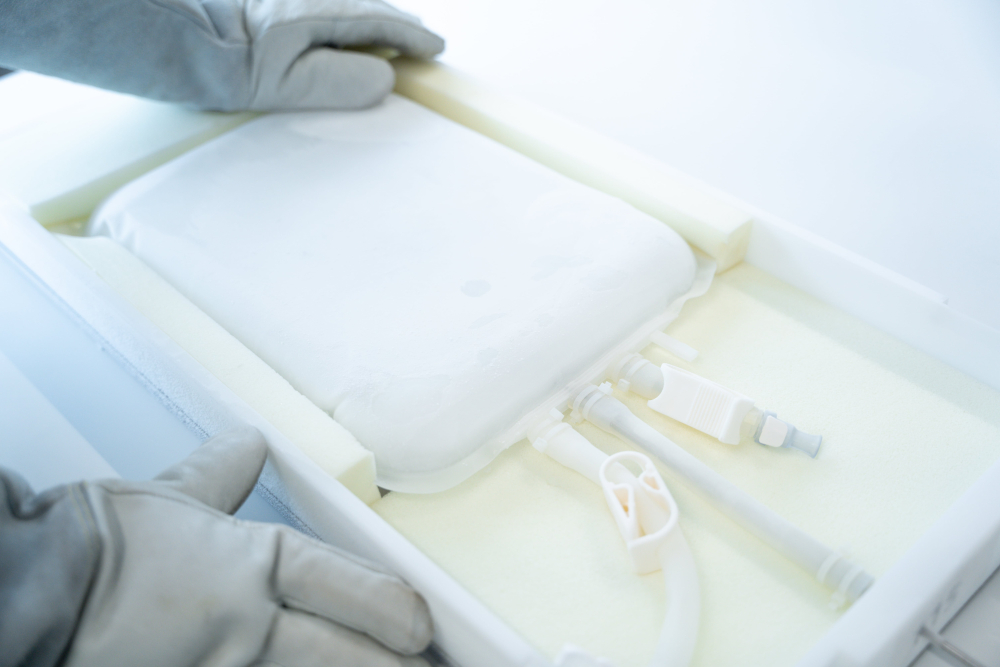
Enhancing Efficiency with Single-Use Technologies
In the optimization of the monoclonal antibody (mAb) production process, single-use technologies emerge as a transformative solution, offering efficiency and flexibility for cost-effective protein production.
Single-use technologies revolutionize traditional manufacturing methodologies by providing a flexible and adaptable approach. Their inherent disposability eliminates the need for time-consuming cleaning and validation processes, streamlining workflows and significantly reducing downtime.
Furthermore, the inherent flexibility of single-use technologies addresses the challenges posed by the evolving nature of the industry. As outlined in the previous chapter, the need for agility and responsiveness in the face of regulatory changes issued by the FDA (Food and Drug Administration) or EMA (European Medicines Agency), variations in product formulations, and advancements in manufacturing technologies, is paramount. Single-use systems provide a scalable and adaptive solution, allowing manufacturers to swiftly adjust to these dynamic requirements.
Beyond efficiency, adopting single-use systems brings about tangible cost benefits. The elimination of cleaning and sterilization requirements not only reduces operational costs but also minimizes the consumption of water, energy, and cleaning agents. The environmental impact of mAb production can thus be significantly mitigated, aligning with sustainable practices in the biopharmaceutical industry.5
Single-use solutions from Single Use Support
As a key player in providing end-to-end solutions based on single-use technologies, Single Use Support stands out as a reliable partner in the biomanufacturing and mAb production landscape. From consumables like single-use bags and assemblies to advanced platform systems, including automated closed filling systems for large or small volumes and freeze-thaw platforms for appropriate monoclonal antibody preservation, Single Use Support offers a comprehensive suite of solutions that are adaptable to all available single-use bags.
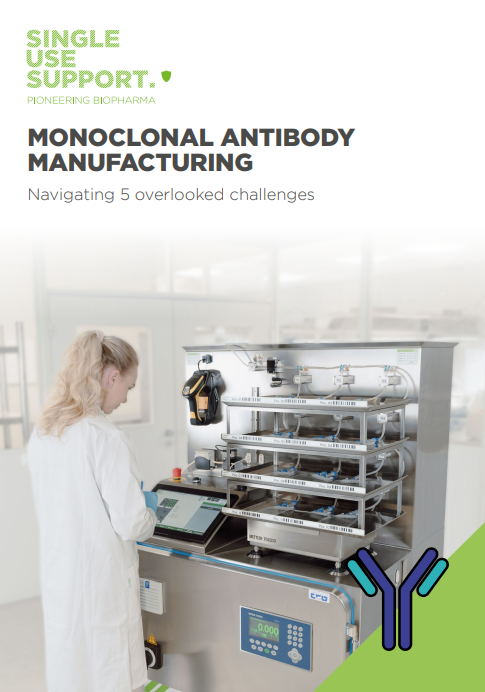
Download Guide
Navigating 5 Overlooked Challenges in Monoclonal Antibody Manufacturing
Conclusion: How to Address the Overlooked Costs
In concluding the exploration of monoclonal antibody (mAb) production, mitigating the three often overlooked costs demands a targeted and innovative approach. Leveraging vendor-agnostic single-use technologies emerges as a comprehensive solution to optimize processes and counteract unforeseen financial implications.
These technologies bring unparalleled efficiency, compatibility, flexibility, and scalability, tackling challenges associated with lifecycle management, process deviations, and regulatory compliance updates.
By embracing single-use systems in fermentation, unit operations, and overall bioprocessing, manufacturers can navigate the intricacies of mAb production with a cost-effective and resilient strategy, ensuring both quality and sustainability in biopharmaceutical production.
FAQs about Costs in Monoclonal Antibody Manufacturing
What are monoclonal antibodies?
Monoclonal antibodies are immunoglobulins that are produced in vitro with the purpose of binding to specific epitopes. They target specific molecules, such as receptors or antigens, on cells and trigger immune responses to eliminate disease-causing agents.
What is a custom antibody?
A custom antibody is specifically designed and produced for a particular application or target. These antibodies are tailored to recognize and bind to unique antigens, making them valuable tools in various research, diagnostic, and therapeutic applications.
What is recombinant technology?
Recombinant technology involves manipulating genetic material to introduce specific characteristics into host cells. In the context of monoclonal antibodies, it is used to create cell lines capable of expressing therapeutic proteins efficiently.
How much does it cost to produce monoclonal antibodies?
The production cost of monoclonal antibodies varies significantly due to factors like scale, technology, and facility needs. It encompasses expenses for raw materials, equipment, labor, and ongoing operational costs. While it's challenging to provide exact figures, we came across examples. An annual mAb therapy in oncology can cost around $100,000. Producing one mAb can range from $6,000 to $15,000. It's essential to note that precise numbers are difficult to state, as we are not a manufacturer of monoclonal antibodies. (Hernandez I, Bott SW, Patel AS, Wolf CG, Hospodar AR, Sampathkumar S, Shrank WH. Pricing of monoclonal antibody therapies: higher if used for cancer? Am J Manag Care. 2018 Feb;24(2):109-112. PMID: 29461857. and https://www.biomatik.com/blog/how-much-does-it-cost-to-make-a-custom-antibody/, How Much Does It Cost To Make A Custom Antibody?, March 9, 2022)
What are the main costs in monoclonal antibody production?
Main costs in monoclonal antibody production include raw materials, labor, equipment, and facility expenses. Additionally, there are often overlooked costs associated with lifecycle management, lack of process agility when deviations occur, and regulatory compliance updates.
Read more about mAbs
- Trends in Monoclonal Antibody Production Using Various Bioreactor Syst, http://dx.doi.org/10.4014/jmb.1911.11066, Published 2020-07-02
- , Published
- Industrialization of mAb production technology: the bioprocessing industry at a crossroads, https://doi.org/10.4161/mabs.1.5.9448, Published 16.09.2009
- Remembering Raw Material Basics for mAb Production, https://www.biopharminternational.com/view/remembering-raw-material-basics-for-mab-production, Published 02.11.2023
- Single-use bioprocessing: Why it pays off to switch to single-use systems now, https://www.susupport.com/knowledge/single-use-technology/single-use-bioprocessing-pays-switch-single-use-systems, Published 15.09.2022


